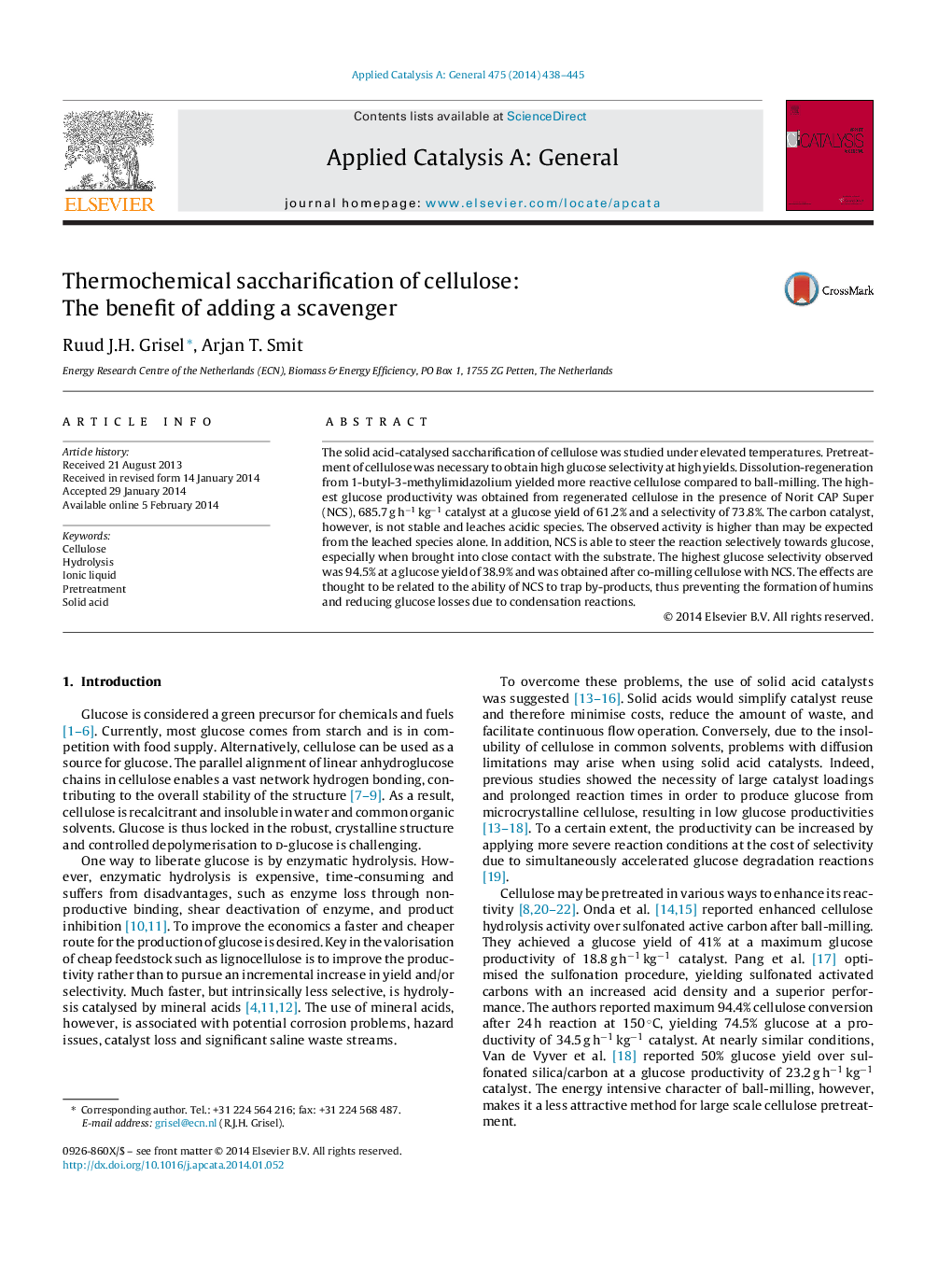| کد مقاله | کد نشریه | سال انتشار | مقاله انگلیسی | نسخه تمام متن |
|---|---|---|---|---|
| 39861 | 45837 | 2014 | 8 صفحه PDF | دانلود رایگان |
• Ionic liquid pretreatment beats ball-milling in activating crystalline cellulose.
• IL pretreatment and thermochemical hydrolysis are efficaciously combined.
• High glucose productivities and yields are obtained using solid acid catalysts.
• Addition of an activated carbon scavenger enhances the glucose yield further.
The solid acid-catalysed saccharification of cellulose was studied under elevated temperatures. Pretreatment of cellulose was necessary to obtain high glucose selectivity at high yields. Dissolution-regeneration from 1-butyl-3-methylimidazolium yielded more reactive cellulose compared to ball-milling. The highest glucose productivity was obtained from regenerated cellulose in the presence of Norit CAP Super (NCS), 685.7 g h−1 kg−1 catalyst at a glucose yield of 61.2% and a selectivity of 73.8%. The carbon catalyst, however, is not stable and leaches acidic species. The observed activity is higher than may be expected from the leached species alone. In addition, NCS is able to steer the reaction selectively towards glucose, especially when brought into close contact with the substrate. The highest glucose selectivity observed was 94.5% at a glucose yield of 38.9% and was obtained after co-milling cellulose with NCS. The effects are thought to be related to the ability of NCS to trap by-products, thus preventing the formation of humins and reducing glucose losses due to condensation reactions.
Figure optionsDownload high-quality image (151 K)Download as PowerPoint slide
Journal: Applied Catalysis A: General - Volume 475, 5 April 2014, Pages 438–445
